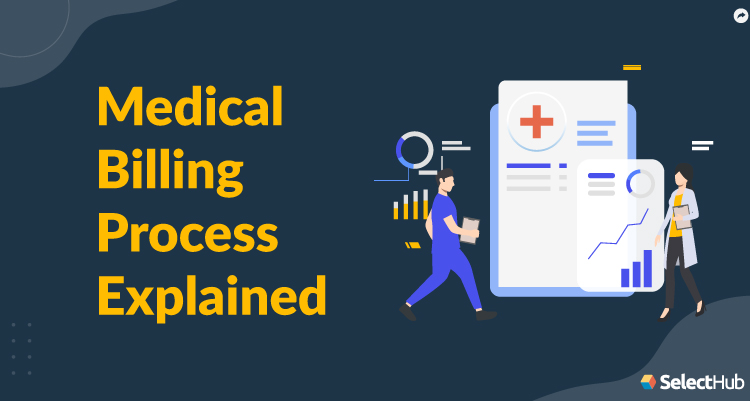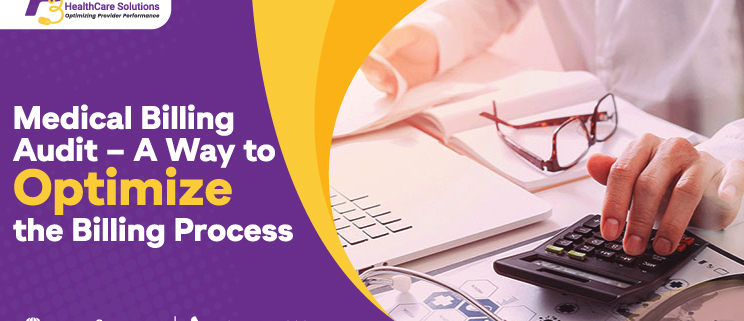In this article, you will learn about the essential first step to perform a medical billing audit. Understanding this first step is crucial to ensure accuracy and compliance with industry standards. By following this step, healthcare professionals can identify potential errors or fraudulent activities in their medical billing process, leading to improved revenue and patient satisfaction. Stay tuned to discover the key element that sets the foundation for a successful medical billing audit.
Understanding Medical Billing Audit

What is a medical billing audit?
A medical billing audit is a systematic examination and evaluation of a healthcare provider’s billing and coding practices to ensure accuracy, completeness, and compliance with industry regulations and guidelines. It involves a comprehensive review of claims, invoices, coding documentation, and adherence to legal and ethical standards.
Why is a medical billing audit important?
A medical billing audit is crucial for healthcare organizations to maintain financial integrity and ensure compliance with regulatory requirements. It helps identify potential errors, discrepancies, and fraudulent activities that could result in revenue loss, billing denials, penalties, and legal consequences. By conducting regular audits, healthcare providers can enhance their financial performance, optimize revenue management, and improve patient care.
What are the objectives of a medical billing audit?
The primary objectives of a medical billing audit are to:
- Ensure accurate and complete billing: Audits help identify and correct errors or omissions in billing, ensuring that healthcare services are properly documented and billed to insurance providers or patients.
- Verify compliance with regulations: Audits ensure that medical billing practices adhere to industry standards, such as the Health Insurance Portability and Accountability Act (HIPAA), and other federal, state, and local regulations.
- Identify revenue leaks: Audits help identify potential areas of undercharging, missed charges, or incomplete billing that could result in revenue leaks and financial loss for healthcare providers.
- Detect fraudulent activities: Audits play a crucial role in identifying fraudulent billing practices, such as upcoding, unbundling, or misrepresentation of services, reducing the risk of legal and financial consequences.
- Enhance financial performance: By identifying and rectifying billing errors, audits help healthcare organizations optimize revenue management, improve cash flow, and maximize their financial performance.
Preparing for a Medical Billing Audit

Gathering necessary documentation
The first step in preparing for a medical billing audit is to gather all relevant documentation related to billing and coding practices. This includes patient medical records, invoices, claims forms, coding guidelines, payer policies, and any other supporting documentation.
Creating a checklist
Developing a comprehensive checklist is essential to ensure that all aspects of the audit process are covered. The checklist should include items such as verifying coding accuracy, reviewing documentation, checking compliance with regulations, and assessing internal controls.
Assigning responsibilities
Assigning specific responsibilities to individuals or teams within the healthcare organization is crucial for a successful audit. This includes designating an audit lead, who will be responsible for coordinating the audit process, as well as assigning tasks to other team members, such as reviewing claims, analyzing coding, and documenting findings.
Conducting the Audit

Reviewing claims and invoices
The next step in the medical billing audit process is to review claims and invoices for accuracy, completeness, and compliance. This involves analyzing billing codes, verifying that the services provided match the billed amount, and checking for any discrepancies or errors.
Analyzing coding and documentation
A critical component of the audit is analyzing coding and documentation practices. This involves reviewing medical records, ensuring that the diagnosis codes accurately reflect the services provided, and checking that the coding is consistent with coding guidelines and payer policies.
Verifying compliance with regulations
Auditors must assess whether the healthcare organization is compliant with applicable regulations, such as HIPAA. This includes reviewing privacy and security practices, ensuring proper patient consent and authorization, and verifying that electronic health records are adequately protected.
Identifying Errors and Discrepancies

Identifying billing errors
During the audit, it is essential to identify common billing errors, such as incorrect coding, undercharging, unbundling of services, or duplicate billing. By identifying these errors, healthcare providers can correct them and prevent potential revenue loss.
Detecting fraudulent activities
Audits also play a crucial role in detecting fraudulent billing practices, such as upcoding (billing for a higher level of service than actually provided), unbundling (separating bundled services to increase reimbursement), or billing for services not rendered. Detecting and addressing fraudulent activities is essential to maintain the integrity of medical billing practices.
Spotting discrepancies in coding and documentation
Auditors must carefully review coding and documentation practices to identify any discrepancies or inconsistencies. This includes checking for missing or incomplete documentation, discrepancies between medical records and billed services, or coding errors that could result in billing denials or penalties.
Correcting and Resolving Issues

Developing a corrective action plan
Once errors or discrepancies are identified, a corrective action plan should be developed to address these issues. The plan should outline specific steps to be taken, assign responsibilities, and establish timelines for implementing necessary changes.
Implementing necessary changes
To resolve billing issues identified during the audit, healthcare providers should implement necessary changes in their billing and coding practices. This may involve additional training for staff, updating coding guidelines, or improving documentation processes to ensure compliance and accuracy.
Resolving billing discrepancies
Any billing discrepancies identified during the audit should be resolved promptly. This may involve contacting payers or patients to correct billing errors, resubmitting claims with appropriate documentation, or appealing denied claims with additional supporting evidence.
Communicating Findings

Preparing an audit report
After completing the audit, it is crucial to prepare a comprehensive audit report summarizing the findings, including identified errors, discrepancies, and recommendations for improvement. The report should be well-documented, clearly outlining the audit process and providing supporting evidence for any identified issues.
Presenting findings to stakeholders
Engaging stakeholders, such as healthcare executives, administrators, and billing staff, is important to ensure buy-in and support for implementing necessary changes. The audit findings should be presented in a clear and concise manner, outlining the impact of identified issues on revenue and compliance, and highlighting the importance of recommended improvements.
Suggesting improvements
In addition to reporting audit findings, it is essential to provide recommendations for improvement. These recommendations should be specific, actionable, and aimed at enhancing billing accuracy, compliance, and financial performance. Continuous improvement is key to maintaining optimal billing practices in the long run.
Adhering to Legal and Ethical Standards

Ensuring compliance with HIPAA
Healthcare providers must ensure strict compliance with HIPAA regulations to protect patient privacy and confidentiality. This includes implementing appropriate security measures for electronic health records, obtaining patient consent for sharing or disclosing protected health information, and training staff on HIPAA requirements.
Maintaining patient confidentiality
Medical billing audits involve accessing confidential patient information. It is crucial for auditors to handle this information with utmost care, ensuring that only authorized individuals have access to patient records and that all sensitive information is securely stored and protected.
Following ethical guidelines
All audit activities should be conducted ethically and in accordance with professional standards. Auditors must adhere to a code of conduct, maintain objectivity and confidentiality, and ensure that their actions and recommendations are driven by the best interests of the healthcare organization and its patients.
Monitoring and Evaluating

Regularly reviewing billing practices
Medical billing practices should be continuously monitored and evaluated to ensure ongoing compliance, accuracy, and efficiency. Regular reviews can help identify any emerging issues, potential areas for improvement, or changes in regulations that may impact billing practices.
Assessing effectiveness of corrective actions
After implementing changes based on audit findings, it is important to assess the effectiveness of the corrective actions taken. This may involve monitoring billing data, reviewing claim denials and rejections, and seeking feedback from billing staff to evaluate the impact of changes on revenue and compliance.
Monitoring compliance with regulations
To maintain compliance with regulatory requirements, ongoing monitoring of billing practices is essential. This includes staying updated on changes in regulations, conducting periodic internal audits, and ensuring staff adherence to compliance policies and procedures.
Benefits of Medical Billing Audit

Identifying revenue leaks
Medical billing audits can identify potential revenue leaks due to undercharging, coding errors, or insufficient documentation. By addressing these issues, healthcare providers can ensure proper reimbursement for services rendered and maximize their revenue potential.
Reducing billing errors and denials
Audits help identify and rectify billing errors that could result in claim denials or delayed payments. By reducing billing errors, healthcare organizations can streamline their claims process, improve cash flow, and minimize the need for costly appeals and resubmissions.
Enhancing financial performance
By optimizing revenue management, minimizing billing errors, and addressing compliance issues, medical billing audits can significantly enhance the financial performance of healthcare organizations. This allows providers to allocate resources effectively, invest in patient care, and ensure long-term sustainability.
Conclusion
Conducting a medical billing audit is crucial for healthcare organizations to maintain financial integrity, ensure compliance with regulations, and optimize revenue management. By following a systematic and comprehensive audit process, healthcare providers can identify and rectify billing errors, reduce denials, enhance financial performance, and improve patient care. Continuous monitoring, evaluation, and adherence to legal and ethical standards are key to achieving efficient revenue management and lasting compliance in the ever-evolving healthcare landscape. So, take the first step now and perform a medical billing audit to ensure the financial health and success of your healthcare organization.
